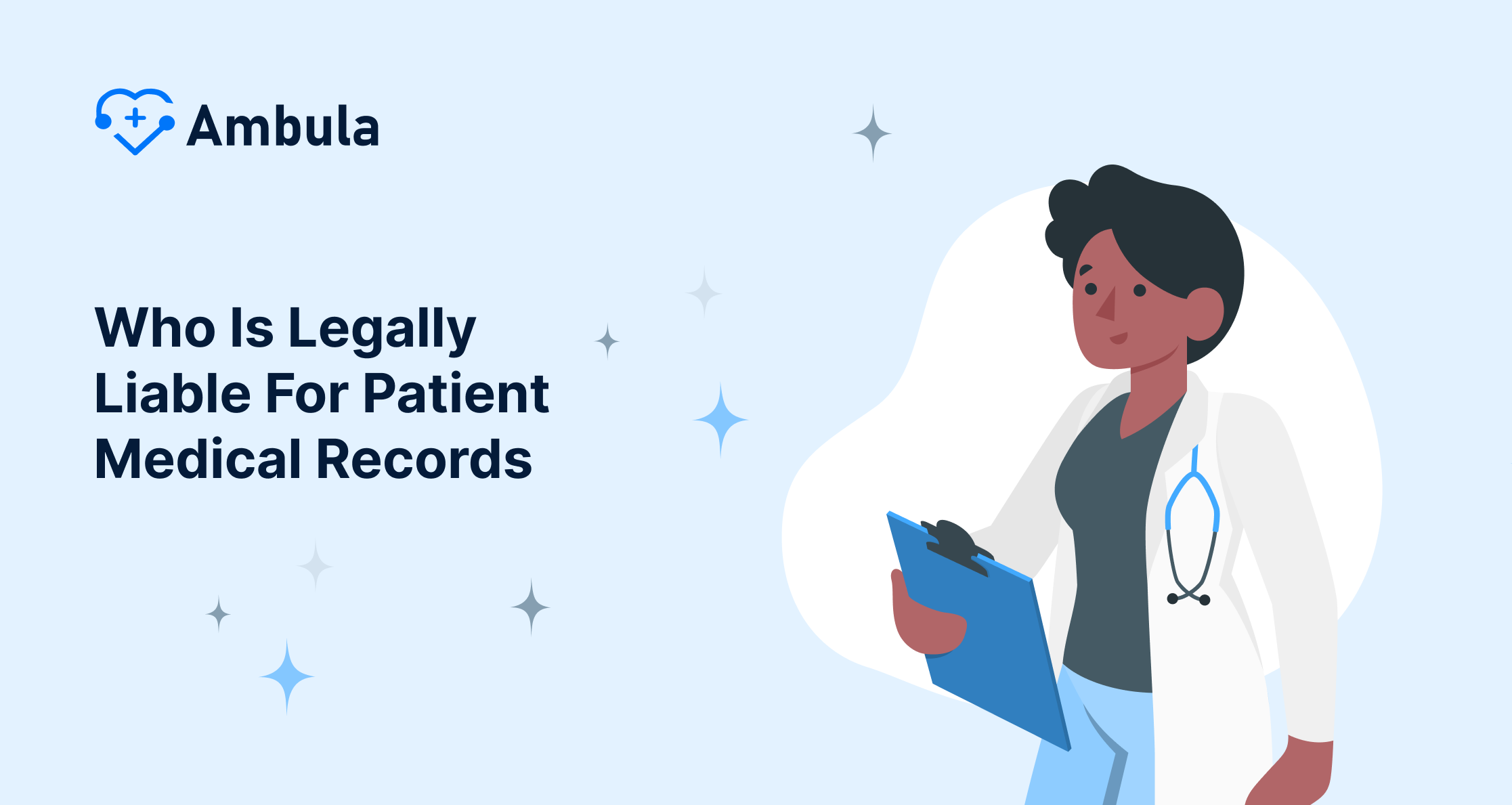
Accreditation organizations are independent bodies that assess the quality of healthcare organizations. Accreditation is voluntary, but it is highly respected by patients, payers, and other stakeholders. Accreditation organizations use various methods to assess quality, including reviewing the health record.
The health record is a vital document that contains information about a patient’s medical history, including diagnoses, medications, allergies, and treatment plans. Accreditation organizations use the health record to assess compliance with standards, identify areas for improvement, and support continuous quality improvement.
How accreditation organizations use the health record to assess compliance with standards
Accreditation organizations have developed a set of standards that healthcare organizations must meet to be accredited. These standards cover many topics, including patient care, medication administration, infection control, and patient safety.
Accreditation organizations review the health record to ensure that these standards are being met. For example, they may look for evidence that:
- Patients’ medical histories are documented accurately and completely
- Medications are being administered safely and effectively
- Infection control protocols are being followed
- Patients are being protected from harm
Specific examples of standards that accreditation organizations review using the health record
Here are some specific examples of standards that accreditation organizations review using the health record:
- Patient care: Accreditation organizations review the health record to ensure that patients are receiving care that is consistent with their individual needs and preferences. They also review the health record to assess the quality of communication between patients and healthcare providers.
- Medication administration: Accreditation organizations review the health record to ensure that medications are administered safely and effectively. They look for evidence that medications are being ordered and dispensed correctly, that patients are being monitored for side effects, and that drug interactions are being avoided.
- Infection control: Accreditation organizations review the health record to assess the effectiveness of the healthcare organization’s infection control protocols. They look for evidence that healthcare providers are washing their hands properly, that sterile equipment is being used correctly, and that patients are being isolated when necessary.
- Patient safety: Accreditation organizations review the health record to identify and address potential safety hazards. They look for evidence that patients are being assessed for their risk of falls, pressure sores, and other complications. They also review the health record to assess the effectiveness of the healthcare organization’s risk management program.
How accreditation organizations use the health record to identify areas for improvement
Accreditation organizations use the health record to identify trends and patterns in patient care. This information can be used to develop solutions to improve the quality and safety of care.
For example, an accreditation organization may notice that a hospital has a high rate of hospital-acquired infections. The organization could then work with the hospital to develop a plan to reduce the infection rate.
Another way accreditation organizations use the health record to identify areas for improvement is by tracking patient outcomes. For example, an accreditation organization may track the mortality rate for patients who have undergone heart surgery. If the mortality rate is higher than expected, the organization could work with the hospital to identify areas where care can be improved.
How accreditation organizations use the health record to support continuous quality improvement
Continuous quality improvement (CQI) is an ongoing process of identifying and implementing changes to improve the quality of care. Accreditation organizations work with healthcare organizations to develop and implement CQI initiatives.
The health record can be used to measure the progress of CQI initiatives. For example, if a hospital implements a new infection control protocol, it can use the health record to track the rate of hospital-acquired infections.
Another way accreditation organizations use the health record to support CQI is by providing feedback to healthcare organizations. For example, an accreditation organization may provide feedback to a hospital on the results of its patient satisfaction survey. The hospital can then use this feedback to identify areas to improve the patient experience.
Other ways that accreditation organizations use the health record
In addition to using the health record to assess compliance with standards, identify areas for improvement, and support CQI, accreditation organizations also use the health record to:
- Support research on healthcare quality
- Educate healthcare professionals on best practices
- Advocate for patients
Support research on healthcare quality
Accreditation organizations use the health record to collect data on healthcare quality. This data can be used to conduct research on a variety of topics, such as the effectiveness of different treatments and interventions.
For example, an accreditation organization may use the health record to study the outcomes of patients undergoing different types of cancer surgery. This information can be used to develop evidence-based guidelines for cancer care.
Educate healthcare professionals on best practices.
Accreditation organizations use the health record to educate healthcare professionals on best practices. They may develop educational materials, such as webinars and online courses, that teach healthcare professionals how to improve the quality and safety of care.
For example, an accreditation organization may develop an educational course on how to prevent medication errors. The course could use data from the health record to illustrate common medication errors and how to avoid them.
Advocate for patients
Accreditation organizations advocate for patients by using the health record to identify and address potential patient safety hazards. They may also use the health record to advocate for patients’ rights and interests.
For example, an accreditation organization may use the health record to identify a pattern of patients being discharged from a hospital before they are fully recovered. The organization could then work with the hospital to develop a plan to improve discharge planning.
Challenges and opportunities in using the health record for accreditation
There are several challenges and opportunities in using the health record for accreditation.
Challenges:
- Data quality: The health record can be a complex and unstructured document. This can make it difficult to extract accurate and reliable data for accreditation purposes.
- Privacy and security: Accreditation organizations must protect patient privacy and security when using the health record.
- Cost: Accrediting healthcare organizations for using the health record can be costly.
Opportunities:
- Improved quality and safety of care: By using the health record to assess compliance with standards, identify areas for improvement, and support CQI, accreditation organizations can help to improve the quality and safety of care for all patients.
- Enhanced patient experience: By using the health record to collect data on patient satisfaction and provide feedback to healthcare organizations, accreditation organizations can help to enhance the patient experience.
- New insights into healthcare delivery: By using the health record to conduct research and educate healthcare professionals, accreditation organizations can help to develop new insights into healthcare delivery and improve the way that care is provided.
Case Studies
Here are some case studies of how accreditation organizations have used the health record to improve patient care:
Reducing hospital-acquired infections
The Joint Commission, a leading accreditation organization, surveyed hospitals across the United States in 2019. The survey found that 86% of hospitals were using the health record to identify areas for improvement in patient care.
One of the most common areas for improvement identified by hospitals was hospital-acquired infections (HAIs). HAIs are infections that patients contract while they are in the hospital. They can be serious and even life-threatening.
The Joint Commission worked with hospitals to develop and implement a new HAI prevention program. The program used the health record to track rates of HAIs and identify areas where hospitals could improve their infection control practices.
As a result of the program, rates of HAIs decreased significantly. For example, the rate of central line-associated bloodstream infections decreased by 87%.
Improving medication safety
The Accreditation Commission for Healthcare (ACHC), another leading accreditation organization, has developed a program to improve medication safety. The program uses the health record to identify areas where hospitals can improve their medication administration practices.
For example, the program looks for evidence that hospitals are using standardized medication dispensing labels and monitoring patients for side effects of medications.
ACHC has found that its medication safety program has led to a decrease in medication errors. For example, one hospital reported a 50% decrease in medication errors after implementing the program.
Enhancing patient satisfaction
The Healthcare Facilities Accreditation Program (HFAP), a third-leading accreditation organization, has developed a program to enhance patient satisfaction. The program uses the health record to collect data on patient satisfaction and provide feedback to healthcare organizations.
For example, HFAP collects data on patients’ satisfaction with the quality of care, the communication between themselves and their healthcare providers, and the overall patient experience.
HFAP uses this data to provide feedback to healthcare organizations on areas where they can improve. This feedback has helped healthcare organizations to improve the quality and safety of care and to enhance the patient experience.
These are just a few examples of how accreditation organizations have used the health record to improve patient care. Accreditation organizations are constantly innovating and finding new ways to use health records to improve the quality and safety of care.
Conclusion
Accreditation organizations play an important role in ensuring quality patient care. They use the health record to assess compliance with standards, identify areas for improvement, and support continuous quality improvement.
The health record is a valuable tool for accreditation organizations and healthcare organizations alike. By working together, accreditation organizations and healthcare organizations can use the health record to improve the quality and safety of care for all patients.
Future of using the health record for accreditation
The future of using the health record for accreditation is promising. As the health record becomes more electronic and integrated, it will become easier for accreditation organizations to extract accurate and reliable data.
Accreditation organizations are also developing new ways to use the health record for accreditation purposes. For example, some accreditation organizations are using artificial intelligence to analyze health records and identify potential safety hazards.
As technology continues to evolve, accreditation organizations can use the health record in even more innovative ways to improve the quality and safety of care.




